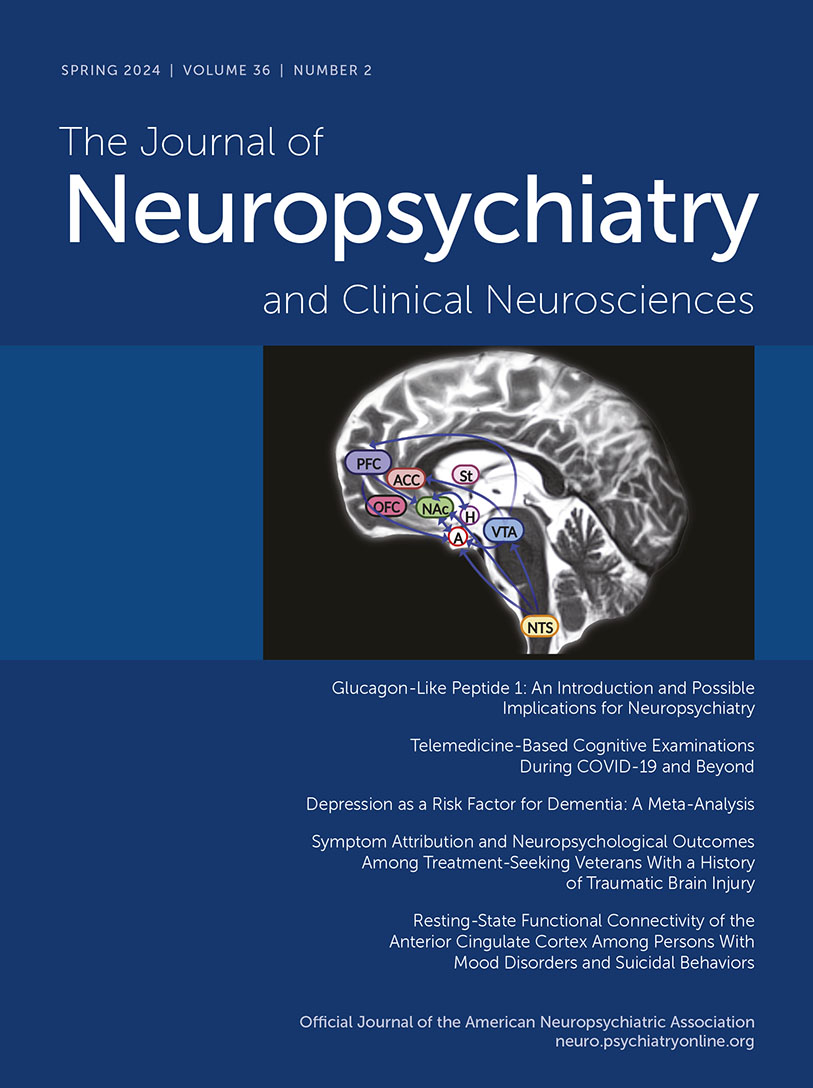Psychiatric Screening Measures in Behavioral Variant Frontotemporal Dementia
Abstract
Objective:
Behavioral variant frontotemporal dementia (bvFTD) is sometimes misdiagnosed as a primary psychiatric disorder, such as major depressive disorder, bipolar disorder, an anxiety disorder, autism spectrum disorder (ASD), or attention-deficit hyperactivity disorder (ADHD). Nonspecialists often use screening measures for primary psychiatric disorders in early assessments of persons with bvFTD. The investigators aimed to evaluate the manifestations of bvFTD in surveys intended to screen for primary psychiatric disorders.
Methods:
Patients with bvFTD (N=27) presenting to an academic neurobehavior specialty clinic and their caregivers were provided questionnaire packets including the Mood Disorder Questionnaire (MDQ), the Patient Health Questionnaire–9 (PHQ-9), the Generalized Anxiety Disorder–7 scale (GAD-7), the Adult ADHD Self-Report Scale, version 1.1, the Ritvo Autism and Asperger Diagnostic Scale, and the Neuropsychiatric Inventory Questionnaire. Established cutoff scores suggesting the presence of a primary psychiatric disorder were used to define a “positive” response. Individual questions from each screening questionnaire were examined for a more granular characterization of bvFTD.
Results:
Overall, 15% of bvFTD patients screened positive for bipolar disorder, 54% screened positive for ADHD, and 89% screened positive for ASD. Hyperactivity or hypersensitivity symptoms were infrequently endorsed. In addition, 57% of respondents screened positive for depressive symptoms on the PHQ-9, and 43% screened positive for anxiety symptoms on the GAD-7.
Conclusions:
The use of cutoff scores on screening measures for primary psychiatric disorders resulted in potentially problematic positive screens of primary psychiatric disorders among persons with bvFTD. Identifying specific questions that distinguish between bvFTD and primary psychiatric disorders requires further study.
Access content
To read the fulltext, please use one of the options below to sign in or purchase access.- Personal login
- Institutional Login
- Sign in via OpenAthens
- Register for access
-
Please login/register if you wish to pair your device and check access availability.
Not a subscriber?
PsychiatryOnline subscription options offer access to the DSM-5 library, books, journals, CME, and patient resources. This all-in-one virtual library provides psychiatrists and mental health professionals with key resources for diagnosis, treatment, research, and professional development.
Need more help? PsychiatryOnline Customer Service may be reached by emailing [email protected] or by calling 800-368-5777 (in the U.S.) or 703-907-7322 (outside the U.S.).



